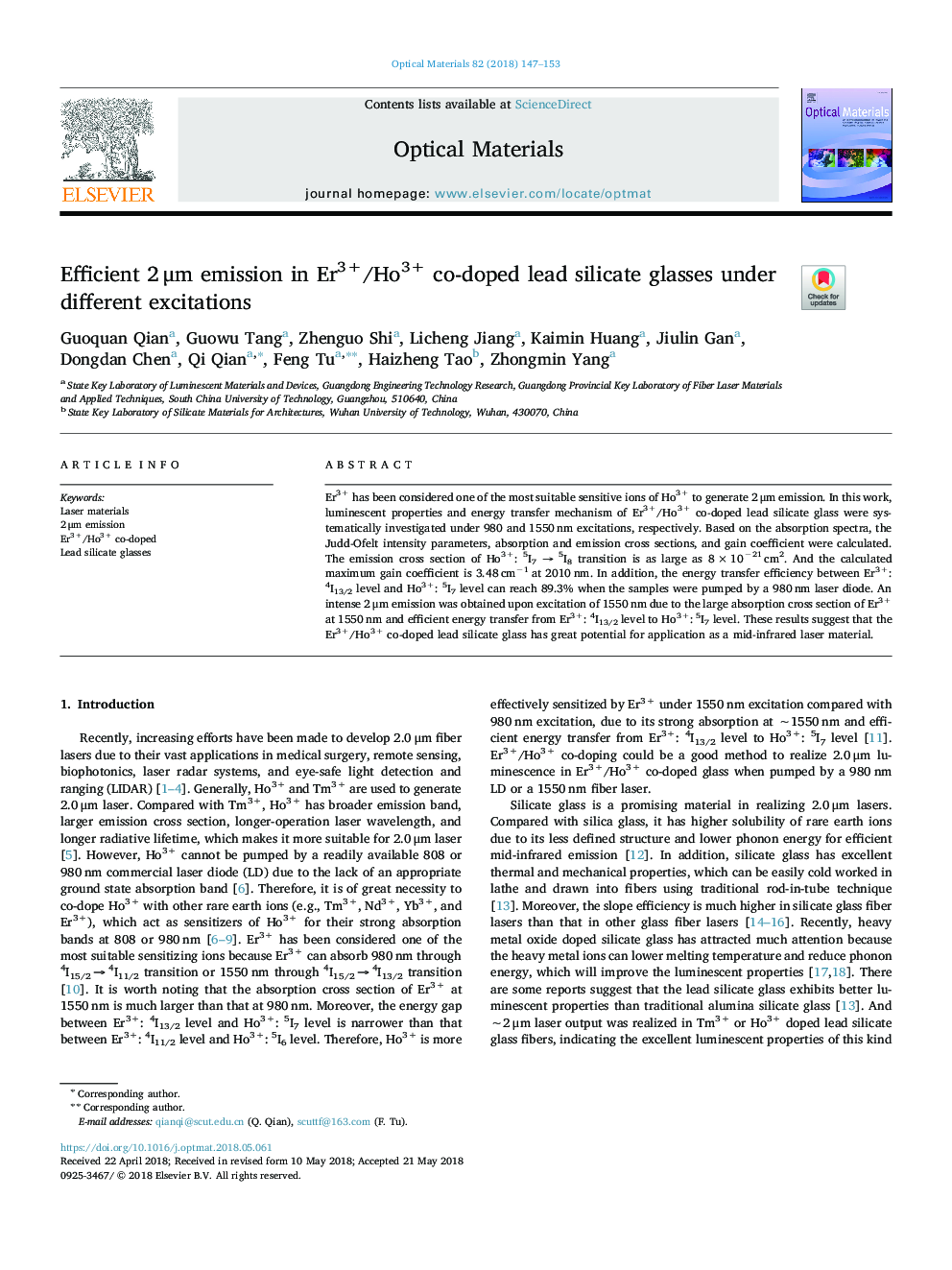| Article ID | Journal | Published Year | Pages | File Type |
|---|---|---|---|---|
| 7906187 | Optical Materials | 2018 | 7 Pages |
Abstract
Er3+ has been considered one of the most suitable sensitive ions of Ho3+ to generate 2â¯Î¼m emission. In this work, luminescent properties and energy transfer mechanism of Er3+/Ho3+ co-doped lead silicate glass were systematically investigated under 980 and 1550â¯nm excitations, respectively. Based on the absorption spectra, the Judd-Ofelt intensity parameters, absorption and emission cross sections, and gain coefficient were calculated. The emission cross section of Ho3+: 5I7 â 5I8 transition is as large as 8â¯Ãâ¯10â21â¯cm2. And the calculated maximum gain coefficient is 3.48â¯cmâ1â¯at 2010â¯nm. In addition, the energy transfer efficiency between Er3+: 4I13/2 level and Ho3+: 5I7 level can reach 89.3% when the samples were pumped by a 980â¯nm laser diode. An intense 2â¯Î¼m emission was obtained upon excitation of 1550â¯nm due to the large absorption cross section of Er3+ at 1550â¯nm and efficient energy transfer from Er3+: 4I13/2 level to Ho3+: 5I7 level. These results suggest that the Er3+/Ho3+ co-doped lead silicate glass has great potential for application as a mid-infrared laser material.
Related Topics
Physical Sciences and Engineering
Materials Science
Ceramics and Composites
Authors
Guoquan Qian, Guowu Tang, Zhenguo Shi, Licheng Jiang, Kaimin Huang, Jiulin Gan, Dongdan Chen, Qi Qian, Feng Tu, Haizheng Tao, Zhongmin Yang,
